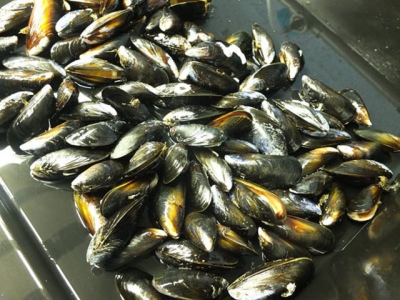Maximising the value of seafood by-products

A new project is investigating how consumer products made from seafood by-products, such as mussel shells, can be more effectively marketed.
The research may help maximise the value of seafood by-products such as mussel shells. Photo © Tom Morton
Researchers in the BlueShell project, which is being led by Nofima, want to identify the arguments that will make the consumer more positive about, and more interested in, products made from residual raw materials.
They also want to identify how production can be made as sustainable as possible and how this can be scaled up. The aim is for manufacturers to achieve profitability in utilising every single part of seafood extracted from the sea, thereby stimulating the use of by-products that are currently discarded or not used optimally, for example, shells from shrimps, crabs and mussels.
“On the marketing side, our focus is on finding ways of talking about residual raw materials that consumers perceive as positive. We test how they react to information about the production method when the are made aware that absolutely all raw materials are being utilised,” explains senior researcher Themis Altintzoglou at Nofima.
The actual survey was conducted among British consumers earlier this year. The results analysis is not completely ready yet, but provisional indications suggest that terms such as “food waste”, “by-product” or “residual raw materials” do not resonate particularly well with consumers.
“The association that consumers make is that they are buying something that would usually have been thrown away,” says Altintzoglou.
A total of 1,867 consumers were interviewed via a questionnaire. The consumers were split into nine groups comprising around 200 persons in each group. The researchers tested three different product types: processed food, dietary supplements and cosmetics, and each consumer group received three different product descriptions about raw materials: processed food, primarily soups and sauces; dietary supplements primarily protein powders; and cosmetics, such as creams.
The three different product descriptions presented to the consumers were either a neutral description of what the product contained or how it was produced, followed by an environmentally-angled description emphasising that the product was manufactured with a view to reducing food waste, while the third description was angled at the product being positive for health.
The response to cosmetics in particular was slightly better in the description concerning the impact on health and reduced waste. In this respect, consumers were somewhat sceptical with regard to both the residual raw materials and the fact that the cosmetics were made from maritime by-products.
“Some consumers were worried that they would smell of fish,” smiles Altintzoglou.
In respect of processed food, the environmental description received a slightly better response among consumers than the neutral description, while those who purchased dietary supplements were significantly more concerned about the environment than expected.
“For those who bought dietary supplements, I suppose we believed that the focus on health would be greater although these consumers also had a positive attitude regarding the natural and sustainable nature of the product,” says the senior researcher.
Nevertheless, the conclusion was that for both dietary supplements and processed food it was positive to discuss the environment and health, while it was more complicated to incorporate this message in cosmetic products.
There is still a lot of research remaining in the project, which is a collaboration between several countries in Europe, including Belgium, Sweden, Ireland and Italy. The entire project is funded by the EU’s ERANET.
How seafood industry can capitalise
The project is not only about market communication but also about optimisation with regard to the use of raw materials and Nofima is also focusing on identifying how production based on residual materials can work best for the seafood industry.
Currently, a lot of residual raw materials from seafood are already used as ingredients in cosmetics. Also, a lot is used as flavour enhancers in processed food and dietary supplements.
“We conduct analyses to identify how the process of breaking down shells and residual products to extract proteins, for example, can be made most effective. The costly element of this process is to identify the correct approach via research. After such research, utilising residual raw materials will provide a dual benefit. Manufacturers can earn more on raw materials that are already available while also reducing the volume of waste,” explains Runar Gjerp Solstad, who is involved in the biotechnological side of the research project and has been successful in utilising enzymatic processes on residual raw materials.
“When we add enzymes to raw materials they work in practice as biological scissors that “cut” up the material and release the proteins from the residue,” says the researcher.
Among the most familiar products extracted from residual raw materials are protein, oil and chitin.
“We should start a discussion about residual raw materials and show how this resource utilisation does more for the environment. This could constitute an important difference,” says Altintzoglou.
Related news
 Mekong Delta uses high-tech methods to raise tra fish
Mekong Delta uses high-tech methods to raise tra fish Tra fish breeds producers in the Mekong Delta have been urged to closely work with research institutes, universities and scientists to apply advanced farming
 Shrimp export turnover continues sliding
Shrimp export turnover continues sliding The shrimp export volume nationwide in the year up to October had slumped by nearly 6% year-on-year to some US$3 billion,
 Shrimp exports at risk from antibiotic residues
Shrimp exports at risk from antibiotic residues Experts have raised warnings about the weaknesses of Vietnam's exported shrimp including unfavourable colour and antibiotic residues which could lead to Vietnam